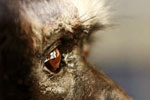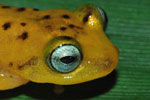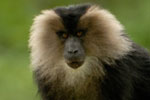Editor’s note: this story should have been published 12/12/2011 but due to a technical glitch never went online. We just noticed its unpublished status today. Our apologies to Velho and Krishnadas (2011).
Selective logging is usually considered less harmful than other forestry practices, such as clear cutting, but a new study in mongabay.com’s open access journal Tropical Conservation Science has found that even selective logging has a major impact on tropical forests lasting decades. Comparing trees in two previously logged sites and two unlogged sites in northeast India, researchers found less tree diversity in selectively logged forests with trees dispersed by birds proved especially hard-hit.
“We found significant differences in species richness and diversity between logged and intact forest… Consistent with previous studies, trees in logged forests were smaller, although overall density was not different between the two treatments. We posit that selective logging might have pervasive effects on functional aspects of tropical tree communities, which appear to persist even after two decades of logging cessation,” the authors write.
The forests, located in and around Pakke Wildlife Sanctuary and Tiger Reserve, were selectively logging in the 1970s and saw some illegal logging thereafter. But in 1996 logging was banned in the area.

Photo by Rhett A. Butler
The researchers found that selective logging drastically changed the composition of the forest. In logged areas, there were far fewer species that depended on animals, such as birds, for dispersal; whereas there were more species dispersed by abiotic forces (non-living actors) such as wind.
“Canopy openness following logging is expected to favor the growth of small-seeded pioneer species, many of which are wind-dispersed, a change in community composition that persists decades after logging,” the authors write.
They add that the loss of old, animal-dispersed trees to logging makes it harder for fruit-eating birds and mammals to survive.
“Many old-growth trees are also important fruiting resources for animals, which in turn disperse the seeds of these species,” they write. Less fruit means less animals, which in turn means less chance for seed dispersal. In essence, the entire character of the forest is changed to favor wind-dispersed trees over animal-dispersed.
Given their findings, the authors recommend a review of selective logging practices in unprotected forests and surveys of biodiversity after logging occurs.
“[The local forest department] has instituted a variety of co-management schemes which include creation of village forest reserves and community conservation areas in many parts of the state. Given that these areas are still open to timber and firewood extraction, which directly impact local livelihoods, our study is of particular relevance and indicates that the present timber extraction patterns may be unsustainable,” the authors write, warning that “the moist forests of northeast India continue to suffer high pressures from logging, hunting, and large-scale felling for agriculture.”
CITATION: Velho, N. and Krishnadas, M. 2011. Post-logging recovery of animal dispersed trees in a tropical forest site in north-east India. Tropical Conservation Science Vol. 4(4):405-419.
Related articles
Rare apes saved in India

(11/30/2011) Two Hoolock gibbons have been successfully translocated from a fragmented forest to Mehao Wildlife Sanctuary in the beginning of a desperate bid to save 18 family groups of India’s last apes. Living near the village of Dello in northeastern India, the apes were straining to survive amid heavy deforestation and fragmentation.
Photos: 10 new frogs discovered in India’s great rainforest

(08/09/2011) Ten new species of frog have been discovered in India’s Western Ghats according to two new papers in Biosystematica. Although human populations have farmed in the Western Ghats for centuries, the new discoveries prove that the rainforest still holds many surprises. The Western Ghats lie along India’s west coast and have been dubbed one of the world’s biodiversity hotspots, but the rich wildlife is imperiled by rising human impacts.
Balancing agriculture and rainforest biodiversity in India’s Western Ghats

(08/08/2011) When one thinks of the world’s great rainforests the Amazon, Congo, and the tropical forests of Southeast Asia and Indonesia usually come to mind. Rarely does India—home to over a billion people—make an appearance. But along India’s west coast lies one of the world’s great tropical forests and biodiversity hotspots, the Western Ghats. However it’s not just the explosion of life one finds in the Western Ghats that make it notable, it’s also the forest’s long—and ongoing—relationship to humans, lots of humans. Unlike many of the world’s other great rainforests, the Western Ghats has long been a region of agriculture. This is one place in the world where elephants walk through tea fields and tigers migrate across betel nut plantations. While wildlife has survived alongside humans for centuries in the region, continuing development, population growth and intensification of agriculture are putting increased pressure on this always-precarious relationship. In a recent paper in Biological Conservation, four researchers examine how well agricultural landscapes support biodiversity conservation in one of India’s most species-rich landscapes.